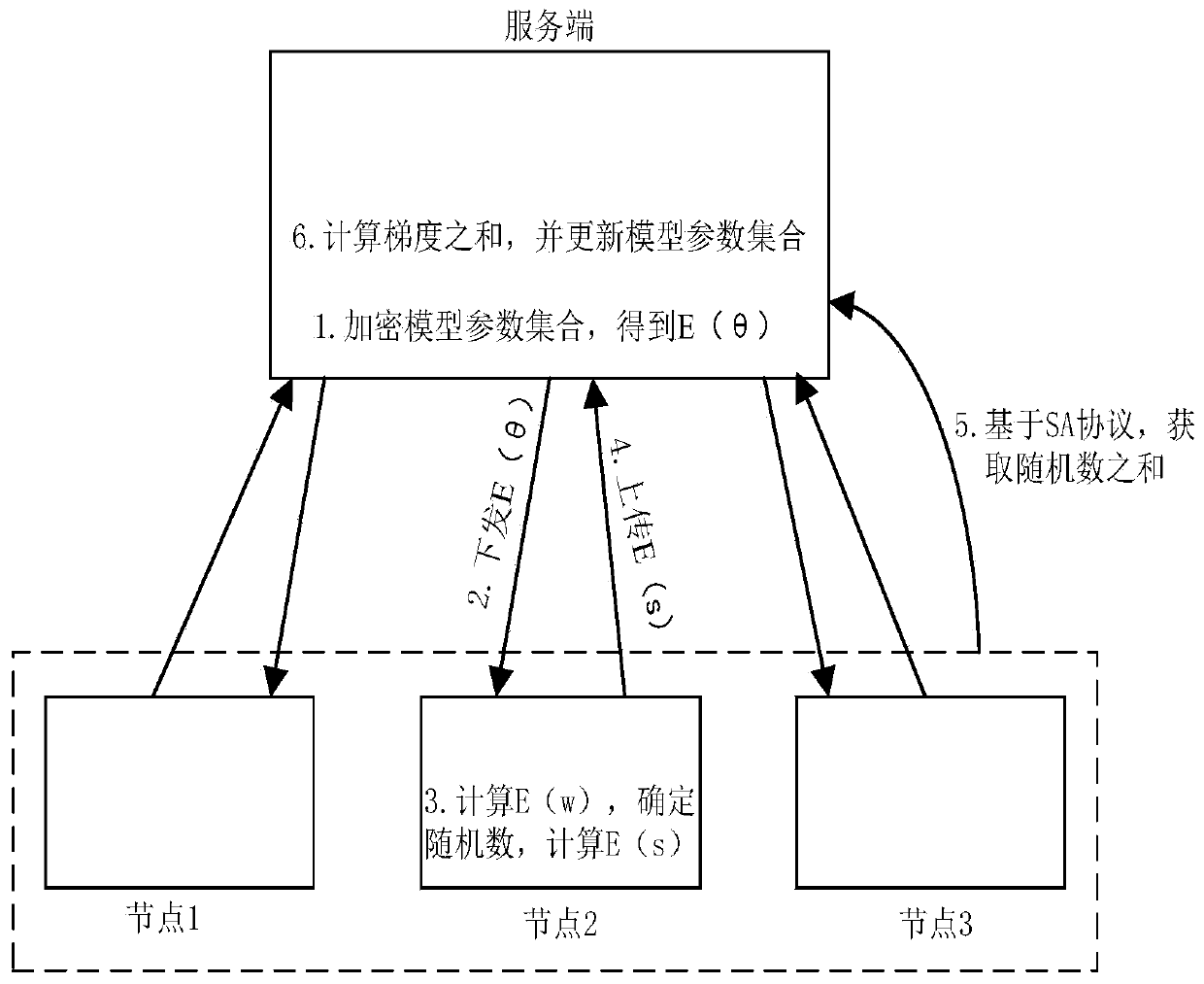Model training method based on federated learning
A model training and federation technology, applied in the information field, can solve the problem that the model parameters are not suitable for exposed nodes and so on
- Summary
- Abstract
- Description
- Claims
- Application Information
AI Technical Summary
Problems solved by technology
Method used
Image
Examples
Embodiment Construction
[0028] Under the federated learning framework, the server is usually responsible for updating the model parameters according to the gradient uploaded by the node, and sending the model parameters to the node, and the node calculates the gradient based on the model parameters and local training samples. In order to prevent the server from inferring the local training samples of the node based on the gradient uploaded by the node, the node uploads the gradient to the server based on the SA protocol, so that the server only obtains the sum of the gradients uploaded by each node, but cannot obtain Gradients uploaded by a single node.
[0029] It can be seen that under the existing federated learning architecture, nodes can hide local training samples from the server, but the server will not hide model parameters from the nodes.
[0030] However, in some scenarios, the server does not want to expose privacy (ie, model parameters) to nodes. For example, suppose it is necessary to t...
PUM
 Login to View More
Login to View More Abstract
Description
Claims
Application Information
 Login to View More
Login to View More - R&D
- Intellectual Property
- Life Sciences
- Materials
- Tech Scout
- Unparalleled Data Quality
- Higher Quality Content
- 60% Fewer Hallucinations
Browse by: Latest US Patents, China's latest patents, Technical Efficacy Thesaurus, Application Domain, Technology Topic, Popular Technical Reports.
© 2025 PatSnap. All rights reserved.Legal|Privacy policy|Modern Slavery Act Transparency Statement|Sitemap|About US| Contact US: help@patsnap.com



